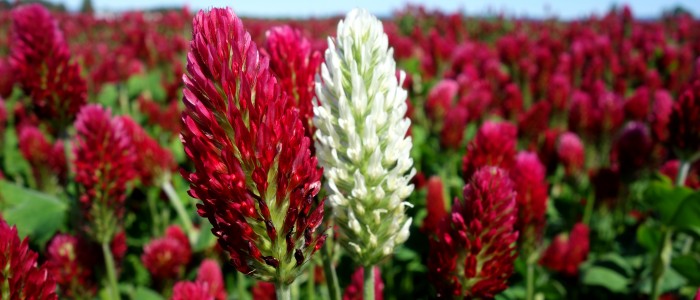-
 Turf Grass Seed Bluegrass, Bentgrass, Ryegrass, Fescues...
Turf Grass Seed Bluegrass, Bentgrass, Ryegrass, Fescues...
-
 Forage Seed Bromes, Clovers, Fescue, Wheatgrass, Legumes
Forage Seed Bromes, Clovers, Fescue, Wheatgrass, Legumes
-
 Grains Wheat Grain, Rye Grain
Grains Wheat Grain, Rye Grain
-
 Cover Crop Seed Buckwheat, Clover, Peas, Ryegrain
Cover Crop Seed Buckwheat, Clover, Peas, Ryegrain
-
 Wildflower Seed Mixtures, Singles, Annual, Perennial
Wildflower Seed Mixtures, Singles, Annual, Perennial
-
 Sprouting Seeds Fully certified Non-GMO Organic seeds for sprouts or microgreens
Sprouting Seeds Fully certified Non-GMO Organic seeds for sprouts or microgreens
Majestic Crimson Clover
MAJESTIC Crimson Clover was selected for outstanding forage yields with strong resistance to northern and southern anthracnose, powdery mildew and alfalfa mosaic virus. It produces very high quantities of top quality forage with exceptional persistence and spring re-growth. It is a highly palatable and nutritious perennial legume that establishes quickly and fixes nitrogen to improve overall stand and soil quality.
Seeding Rates:
Pure Stand: 15-20 lbs/acre
with Grass: 8-10 lbs/acre
Frost Seeded: 10-12 lbs/acre
Utilization: Crimson clover is an excellent choice for pastures, hay, silage, soil amendment and cover crops. When grown where it is well adapted, it will produce higher yields with longer growing seasons than any other clover.
Establishment: Most crimson clover is seeded in late winter to early spring. It tolerates a wide range of soil and climate conditions and grows best in moderate to well drained soils with adequate levels of phosphorous and potassium (a soil pH of 6.2-6.5 is recommended). It will establish quickly and can be sown by itself or in mixtures with small grains, alfalfa and/or cool season grasses. It can also be frost seeded.
Management: Crimson clover production is typically highest in its second year. If summer rainfall is adequate, clover can be cut every 35 to 45 days. Growth should be removed after freeze down. Stands that are 12 months or older should be cut 3-4 times in a season. When grazing, turn livestock when plants are 6-8″ tall and remove them when 3-4″ of the plants remain. Insects, especially bumble bees, are critical for pollination.

